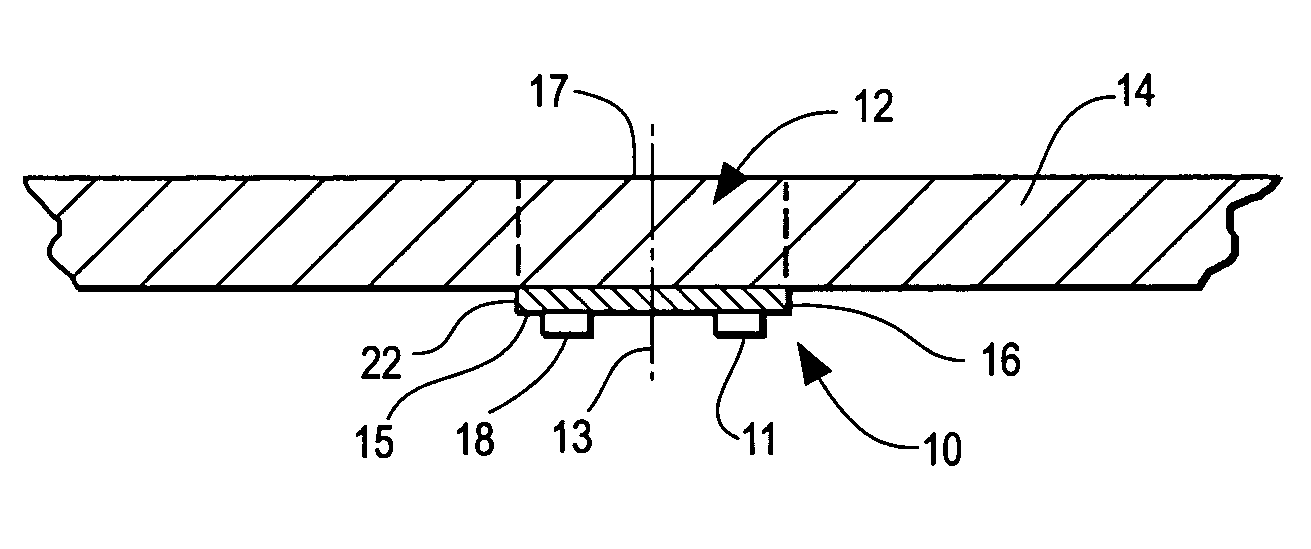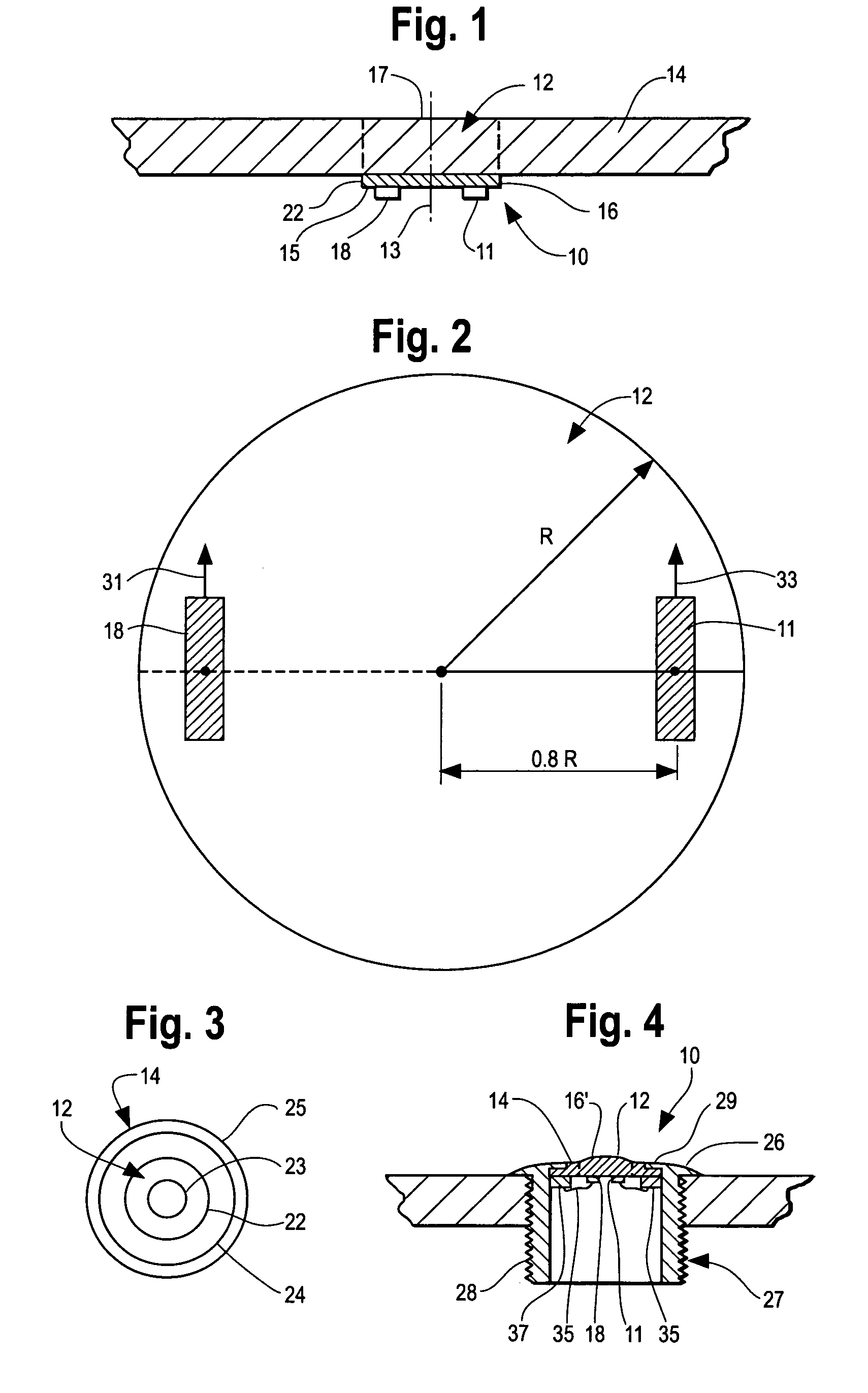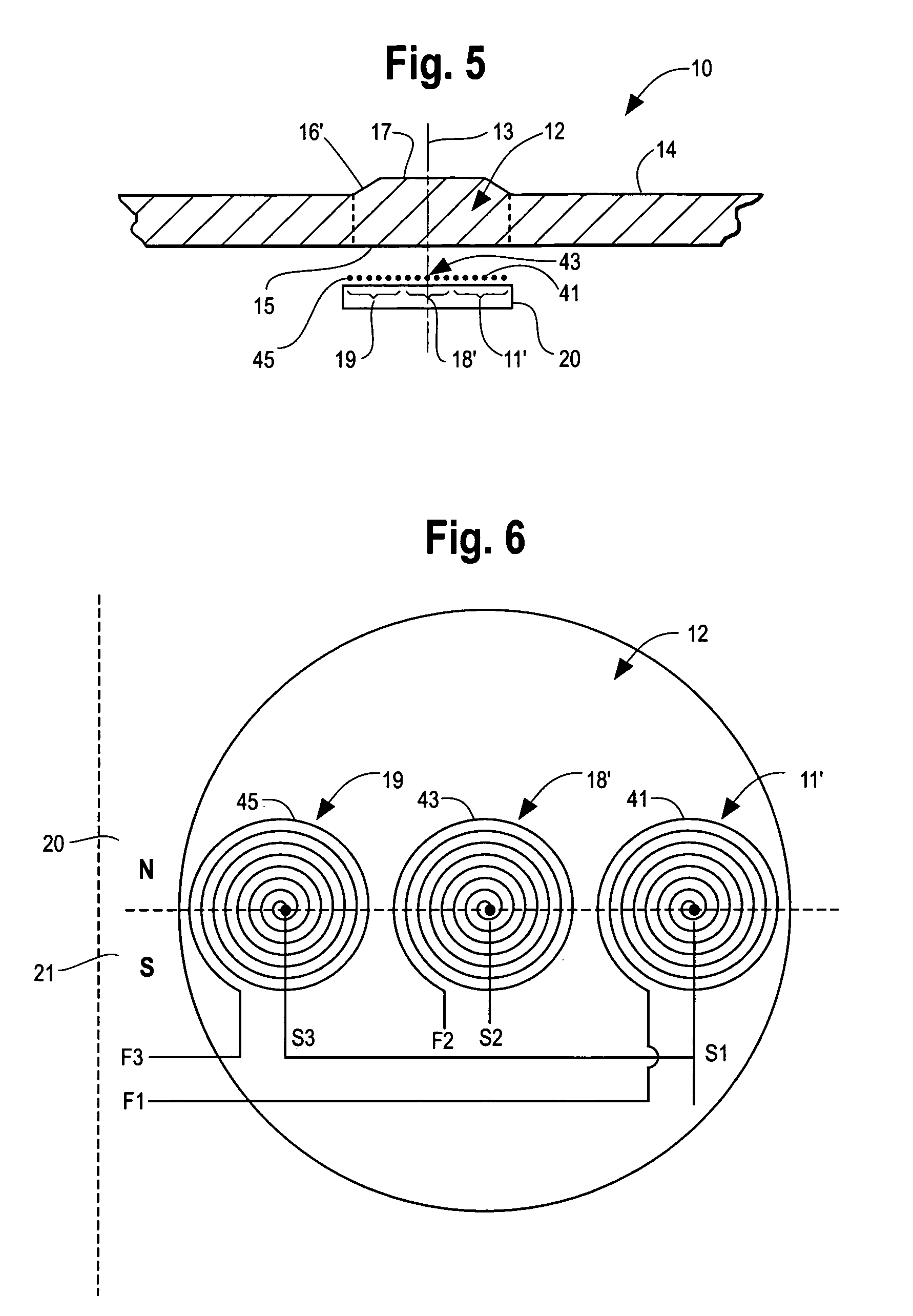Acoustic wave ice and water detector
a technology of ice and water detector and acoustic wave, which is applied in the direction of piezoelectric/electrostrictive transducers, vibration measurement in solids, fluid vibration measurement, etc., can solve the problems of high system cost, extremely complex analysis of signal, and inability to detect ice or other contaminants, etc., and achieves the effect of simple manufacturing
- Summary
- Abstract
- Description
- Claims
- Application Information
AI Technical Summary
Benefits of technology
Problems solved by technology
Method used
Image
Examples
Embodiment Construction
[0024]An acoustic wave sensor 10, in accordance with the present invention as shown in FIGS. 1–6, includes a transducer 11, 11′ positioned adjacent an acoustic wave cavity 12 such that the transducer 11, 11′ is off-center with respect to the centerline 13 of the cavity 12 to generate a trapped or resonant torsional acoustic wave in the acoustic wave cavity 12. The acoustic wave cavity 12 is formed in a noncylindrical substrate 14 wherein the transducer 11, 11′ generating the trapped torsional acoustic wave is in a plane that is parallel to a planar surface 15 of the acoustic wave cavity 12. Because torsional waves can be trapped in a cylindrical substrate, the acoustic wave cavity of the sensor 10 can also be formed in a cylindrical substrate. It has been found that a trapped, torsional acoustic wave generated in accordance with the present invention is sensitive to a first substance such as ice contacting a surface 17 of the acoustic wave cavity but is insensitive to water. That is...
PUM
| Property | Measurement | Unit |
|---|---|---|
| diameter | aaaaa | aaaaa |
| diameter | aaaaa | aaaaa |
| height | aaaaa | aaaaa |
Abstract
Description
Claims
Application Information
 Login to View More
Login to View More - R&D
- Intellectual Property
- Life Sciences
- Materials
- Tech Scout
- Unparalleled Data Quality
- Higher Quality Content
- 60% Fewer Hallucinations
Browse by: Latest US Patents, China's latest patents, Technical Efficacy Thesaurus, Application Domain, Technology Topic, Popular Technical Reports.
© 2025 PatSnap. All rights reserved.Legal|Privacy policy|Modern Slavery Act Transparency Statement|Sitemap|About US| Contact US: help@patsnap.com



